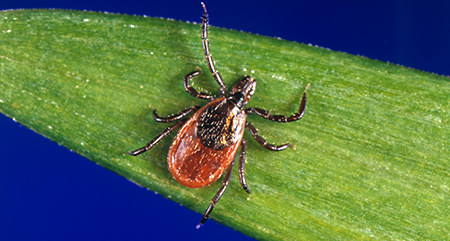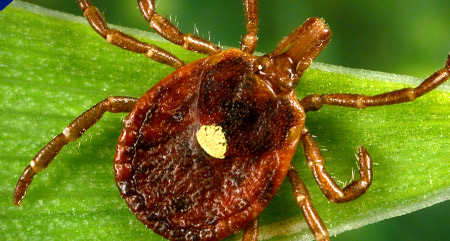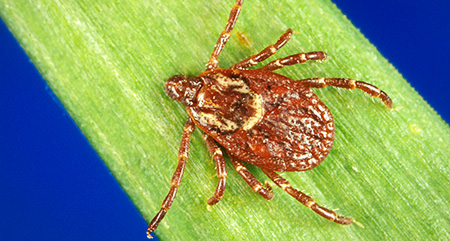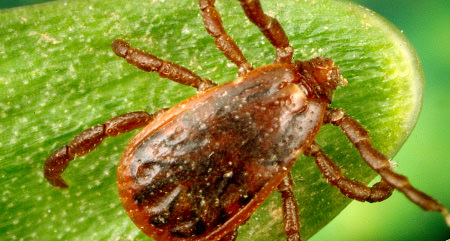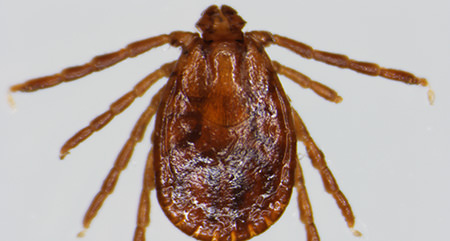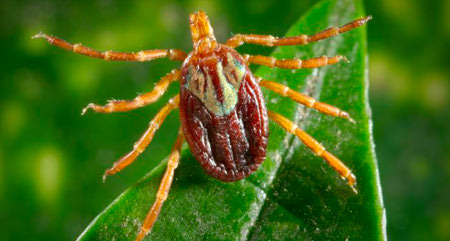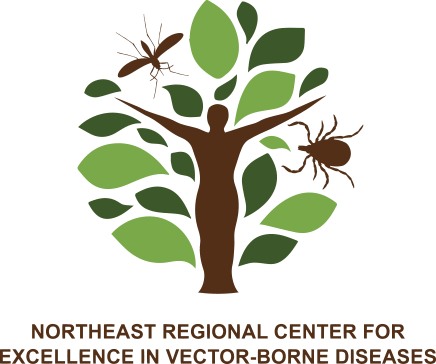Ticks of the northeast
There are several species of tick in the Northeast that are important to human and animal health. We have highlighted the major species in our region that can transmit diseases to humans, like Lyme disease, or are invasive to the region. If you’re interested in learning more about specific tick-borne disease issues, make sure to visit our applied research page!
Explore the following resources to identify, prevent, control, and report ticks in and around your life. If you have questions or need additional assistance, please feel free to contact us.
New York State Tick Blitz
The goal of the NYS Tick Blitz is to understand the presence and range expansion of two invasive tick species that are not monitored through the NYS Department of Health’s extensive Ixodes scapularis monitoring program. These two tick species are the Asian Longhorned Tick, Haemophysalis longicornis, and the Lone Star Tick, Amblyomma americanum. More information on these species can be found here.
In addition to this research goal, we aim to provide education and training to the community through engagement. Volunteers participate in active tick sampling and collect data on which tick species are in their area. Volunteers also learn about tickborne disease and tick bite prevention strategies. Maps and data from 2021 to 2023 are located here:
New York State Tick Blitz Results
Tick Bite Prevention
While it makes sense to take preventative measures against exposure to ticks all year long, it is important to pay extra attention during warm months when ticks are most active. Explore our featured strategies and guidance below on how to protect your home and family from exposure.
Full Body Tick Check Guide
- Always do a full body tick check after spending time in areas where ticks live, like woody or brushy areas with tall grass or leaves.
- Ticks are often found under the arms, in and around the ears, inside the belly button, behind the knees, between the legs, around the waist, and in the hair.
- Showering within two hours of returning indoors is an effective way to reduce your risk of getting sick with a tick-borne disease. Showering can help rinse off unattached ticks, and is a great time to do a full body tick check.
Need help learning how to do a proper tick check? Visit the websites below for great tips and how-to guides!
EPA Registered Tick Insect Repellents
Using EPA-registered insect repellents can be an effective way to prevent ticks from biting you.
Always read and follow the label instructions when applying insect repellent!
- The EPA has an online tool that can help you find the insect repellent that is best for you.
- NEVBD developed the Insect Repellent Essentials: A Brief Guide, explaining how they work, when you should think about using one, and busting some common myths about insect repellents that you might have heard. Desponible en español Repelentes de insectos: guía breve.
Additional Resources
The New York State Integrated Pest Management program developed a great educational video on protecting yourself from tick bites using insect repellents on yourself, your pets, and how to safely find and remove ticks.
Protective Clothing Best-Practices
- Wear light-colored clothing that covers your arms, legs, and feet. You can also tuck the legs of your pants into your socks to keep ticks from crawling under your clothes.
- You can also treat your clothing with products containing 0.5% permethrin. Permethrin can be used to treat boots, clothing and camping gear and remain protective through several washings. Permethrin should never be used directly on skin!
- Learn more about using permethrin on your clothes by visiting TickEncounter.org or New York State Integrated Pest Management Don’t Get Ticked, NY
Additional Resources:
Watch this great video from our partners at the New York State Department of Health for recommendations on using protective clothing and insect repellents:
You can also find more information and resources on preventing tick bites by visiting the CDC website.
Keeping Ticks Out of Your House
Pay attention to things that can bring ticks into your home:
- Check your pets for ticks regularly if they spend time outside. Pets can pick up questing ticks outdoors and bring them inside on their fur. These ticks can drop off and bite you or someone else in your home. Ask your veterinarian about using a tick preventative product on your pet, and visit the CDC website for information on preventing ticks on your pets to learn about safely using tick control products on cats and dogs
- Check your clothing and gear after returning from the outdoors, even parks! Ticks can catch a ride on your clothes, backpack, boots, or other gear and end up on you later.
- Tip: You can put your clothes in a dryer on high heat for 10-20 minutes after returning from outdoor activity. The heat will kill any ticks crawling on your clothes.
Prevention for Pets
-
You can protect your household pets from tick bites through the use of flea and tick medication. Note: Cats are extremely sensitive to a variety of chemicals. Do not apply any tick prevention products to your cats without first asking your veterinarian!
-
Outdoor areas with vegetation that are frequently visited by household pets and humans, like backyards and gardens, should be kept trimmed and properly maintained.
- Routinely check household pets, especially dogs, and to prevent tick bites through the use of flea and tick medication. These are the common areas on a dog to check for ticks:
- Inside the ears
- On the head and neck
- Between the toes
- Belly and chest
- Legs
Visit the CDC website on Preventing Ticks on Your Pets to learn more.
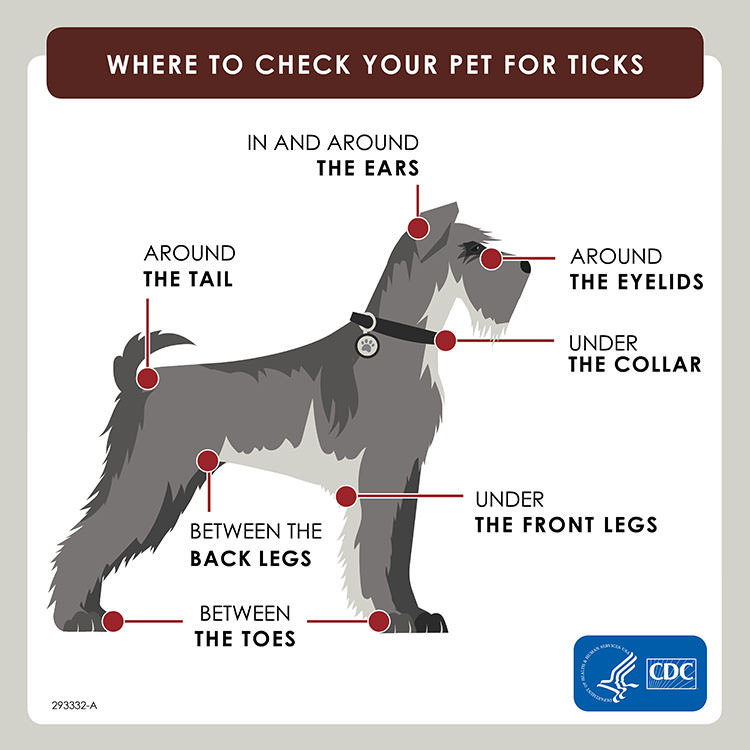
How to Reduce Your Tick Habitat
Manage your property to reduce tick habitat:
- Remove dead leaves and clear tall grasses and brush from around your home and at the edge of your lawn.
- Create a barrier of wood chips or gravel between your lawn and wooded areas. This helps keep ticks from wandering into your yard.
- Mow the lawn frequently.
- Stack wood neatly and in a dry area to discourage rodents that can carry ticks, like mice and chipmunks. You can also use fences to keep unwanted animals carrying ticks, like deer, from entering your yard.
- Keep playground equipment, decks, and patios away from yard edges and trees.
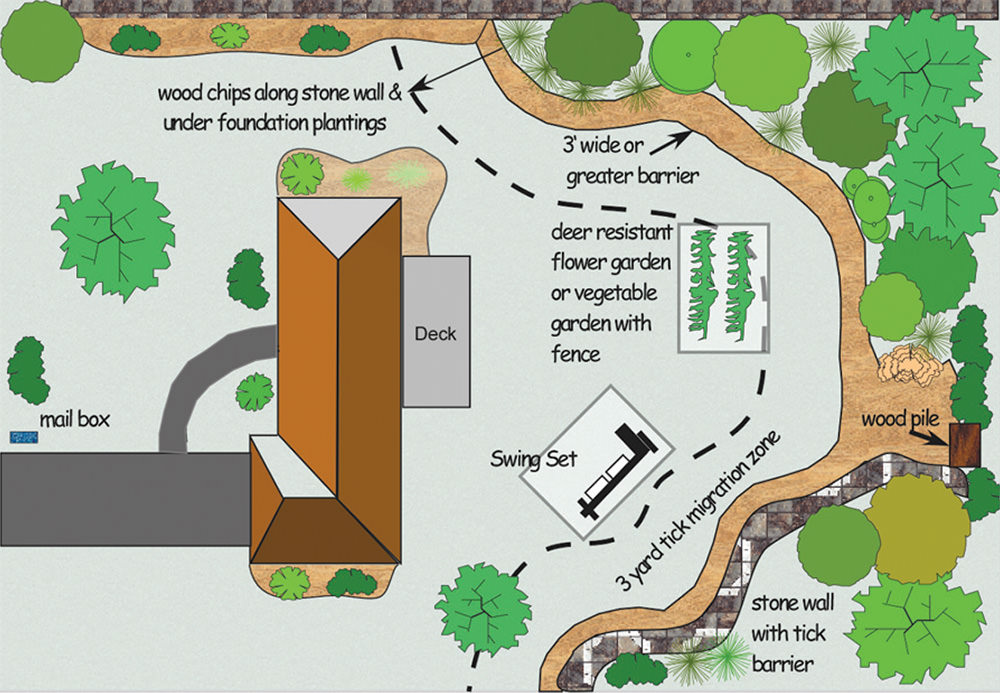
Additional Resources:
Learn more great tips for keeping your yard safe from ticks in the Tick Management Handbook from the Connecticut Agricultural Experiment Station or visit New York State Integrated Pest Management Don’t Get Ticked, NY
You can also watch this free webinar on Integrated Tick Management hosted by the National Environmental Health Association and NEVBD in May 2020.
The TickApp
The TickApp is a free smartphone app that offers tick identification resources in the Northeast and Midwest USA.
The Tick App also provides information on how to remove ticks, prevent tick bites, and general information about ticks. If available, information is also provided about blacklegged / deer tick activity in your area. Download the TickApp today!
Learn more about the research behind the TickApp on our project page!
Northeast Tick Identification Services
The following services are the most commonly used throughout the Northeast region of the United States. If you need additional assistance, please check with your local county cooperative extension offices and/or mosquito control agencies. Many of these local offices will provide tick identification services.
Community Engaged Tick and Tick-Borne Disease Surveillance
- Availability: New York State
- Cost: Variable
- Operated by the Thangamani Lab at SUNY Upstate Medical University
Connecticut Agricultural Experiment Station
- Availability: CT residents only
- Cost: Free
Maryland Center for Zoonotic & Vectorborne Diseases, University of Maryland
- Availability: MD residents only
- Cost: Contact for estimate
Pennsylvania Tick Research Lab
- Availability: United States
- Cost: $50 to $175
TickEncounter Tick Resource Center
- Availability: United States
- Cost: Free
- Operated through University of Rhode Island
UMass Amherst TickReport
- Availability: United States
- Cost: $50
UMaine Cooperative Extension
- Availability: United States
- Cost: Free
